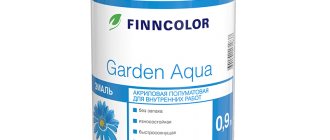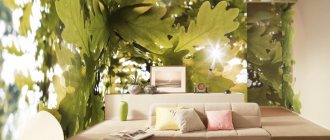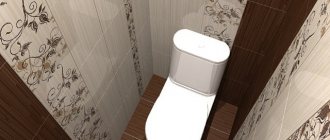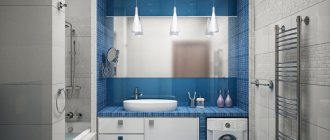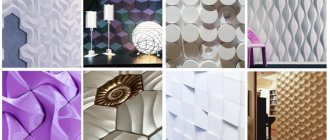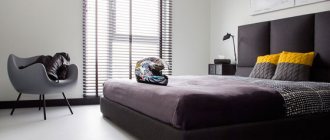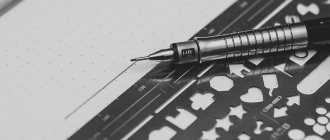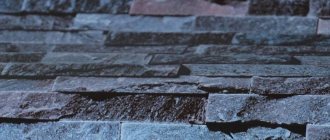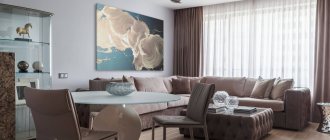A mix of the texture of aged metal with the shine of new metal is the main trend in using this material in the interior. Such a mixture allows even from the metallic essence to extract extraordinary liveliness and warmth, without which it is impossible to equip a modern and comfortable home. And if previously the proximity of various metals in the interior was considered bad manners, now it is only welcomed.
Today ReRooms tells you how to most effectively place metallic accents in your interior. It turns out that even metal walls look very luxurious.
Exquisite finishing
The living area is designed to be warm and cozy, so what kind of metal in the decoration can we talk about, you say? Now we'll show you. You can line an entire wall with smooth stainless steel sheets to slightly cool a hot room that is constantly flooded with sunlight from the window. Or, on the contrary, insulate a room in which the rays of the sun are infrequent guests. For the latter purpose, it is better to use copper sheets of a reddish color - in contrast to the cold steel shade, they will bring coziness to the atmosphere of the room and give it a certain status.
Calculate the exact cost of repairs using an online calculator
and receive a free detailed estimate for repairs
Calculate
Photo: home-designing.com
Photo: friendsofthecommons.org
Review of manufacturers
Iron panels are produced manually at the construction site or automated at the enterprise. Among foreign manufacturers on the market, there are several brands that have become especially popular:
- British-Dutch brand Corus Group;
- American company Alcoa, which produces aluminum siding;
- Finnish company Ruukki with metal panels.
Among the Russian suppliers, the Grand Line brand, the products of the Severstal enterprise, and the products of the Lipetsk enterprise and the INSI holding have proven themselves well. They have more affordable prices per m2.
Fashionable partitions
Metal in the interior can not only take on the main decorative role, but also become an important functional element, such as a partition in studio spaces.
Photo: homebnc.com
Moreover, such material goes well with any finish, be it wood, glass, plaster or just wallpaper. So there is enough room for imagination!
Photo: atouchofclassflorist.info
Basic properties of the material
To make corrugated sheets, thin sheet steel is used, protected from corrosion by a zinc coating. After rolling in machines, flexible metal turns into corrugated profiles with waves of different configurations and sizes, and acquires additional characteristics. To enhance the protective properties, the sheets are coated with a polymer composition, and a decorative layer is applied to the front side. Stiffening ribs give the product high strength with low weight, which helps reduce the load on the base. And the greater the height of these ribs, the more resistant the corrugated sheet is to mechanical loads.
The service life of the cladding depends on the type of protective coating: simple galvanized corrugated sheeting lasts about 30 years, and polymer-coated corrugated sheeting lasts up to 45 years or more. The material can be machined and is easy to drill and cut, making installation of sheets effortless. If necessary, corrugated sheeting can be dismantled and reused without deteriorating performance characteristics.
Fireplace decoration
Many people think that metal can only fit organically into loft or high-tech interiors. Not necessary. It feels great even in classic interiors, although only in moderation. Look at what a fireplace framed with metal looks like: it attracts attention and also reflects light perfectly.
Photo: interiorgod.com
For such an original decoration of the fireplace area, it is not necessary to use exclusively steel sheets - carved panels of bright colors are also suitable, which will look no worse.
Photo: residential2017.tableaux.com
Additional elements for corrugated sheets
In addition to the sheets themselves, additional elements will be needed for finishing. Each of them performs specific functions and is an integral part of the house’s cladding.
| Item name | Purpose |
| Used for framing external corners. Gives the skin a finished look and at the same time protects the joints from precipitation, dust, and small debris. Mounted on top of the corrugated sheet, as a result of which the screw heads remain visible | |
| It is attached to the inner corners of the building and performs protective and decorative functions. Mounted on top of profiled sheets, fasteners remain visible | |
| External corner difficult | Performs the same functions as a regular corner, but it is attached to the sheathing before installing the sheets. This installation allows you to make hidden fasteners |
| Inner corner difficult | Installed in the internal corners of the facade before installing corrugated sheets, it performs protective and decorative functions |
The docking strip is complex | Intended for protecting and finishing sheathing joints on the wall plane. Attached to the sheathing before installing the corrugated board |
| It is used to frame the ends of the sheathing, protects them from the effects of precipitation, and gives a neat appearance. Attached to the sheathing before installing the sheets | |
| Used for framing door and window openings. Protects against precipitation and debris, attaches to the sheathing before installing the sheathing | |
| Performs the same functions as a complex docking strip, but is attached after installation of the sheathing, as a result of which the fastener heads remain visible | |
| Molding | It is used to finish the joint between the facade of the house and the lining of the eaves overhang. Attached to the sheathing before installing corrugated sheets |
| Used to protect window sills from rain flows. Installed at the bottom of the window slopes before installing the casing | |
| Platband | Used to decorate door and window openings, giving them a finished look |
| It is used to protect the upper part of the base from rain and snow, thereby extending its service life. Attached to the bottom of the sheathing before installing corrugated sheets |
As a rule, these products are produced in lengths of 3.2 and 1.25 m, although each manufacturer may have its own parameters. It is much easier to calculate their number than sheathing sheets, since here everything is measured in linear meters, and not in square meters.
3D effect
Metal is an excellent material for a central accent in laconic and slightly ascetic interiors. Use metal panels with volumetric geometry or forged inserts in frames on neutral walls. Due to the rich metallic shine, they look like real art objects, which, depending on the level of illumination in the room, will change throughout the day. Using such metal panels, you can safely play with textures and shapes: combine the incongruous, and the interior will only benefit from this.
Photo: archiproducts.com
Photo: patioyarddesign.com
Vertical metal siding
Metal wall panels (facade cassettes) provide the ability to vertically align each panel to create attractive exterior lines. Using traditional panels or more modern ones, living spaces are provided with a variety of designs. A popular option in commercial, residential and agricultural applications, vertically controlled metal siding provides clean lines and can help draw attention to key features of a build.
The most common use for metal siding is to run it vertically. The choice between credential and horizontal siding comes down to visual appeal. Vertical siding creates the traditional look of tall, clean lines while making spaces appear larger than they actually are. Although vertical siding can be a little more difficult to install, the end result will be worth it.
Practical plumbing
Do you have elements in your apartment that spoil the entire interior design, but there is no way to get rid of them? Make them accentuated. For example, communications in the bathroom and toilet can be treated with paint that imitates metal - it will turn out stylish, unusual and beautiful.
Photo: kellysdepot.com
Another fashionable trend in modern interiors is copper or brass plumbing. In addition to its aesthetic appearance, it has another advantage over products made from other metals. The fact is that copper and brass are excellent biostatics that prevent the growth of bacteria. And this is very important for creating a favorable atmosphere in bathrooms and kitchens, where these same bacteria multiply at cosmic speed.
Photo: gunnitrentino.es
Photo: drummonds-uk.com
How to sheathe a house with metal profiles
At first glance, constructing a façade made of metal profiles may seem like an impossible task. This is not true, the work can be done with your own hands. The main rule is that you should not climb to a height above the second floor without preparation and skills. To perform high-altitude work, you will need the help of specialized teams. They will do the work quickly, efficiently, without risking your life.
Work on installing a ventilated façade can be divided into several stages:
Inspection
It consists of visual and, if necessary, contact sanitation. It is determined what material the load-bearing wall is built of, its age and visual strength. This is necessary to select the type and length of anchors for attaching the brackets.
The facade is measured, its area, the number and size of window and door openings are determined. This will allow you to order the required amount of material without overpaying for excess.
Ordering material
An important step that is carried out after making a sketch of the future facade on a piece of paper. A sketch is a development of a facade with window and door openings. It indicates all the required dimensions and areas. The sketch also indicates zoning if the façade is planned to consist of more than one color.
You can calculate the amount of material yourself, or use a façade calculator or trust a sales consultant in a store. First, the steel system of the supporting structure is calculated, then the insulation, cladding, and additional elements.
The technology for installing metal structures provides for a material reserve of 5-10%.
Preparing the surface for cladding
Consists of several stages:
Installation of brackets
Each bracket is attached to the wall using two anchors. It is applied to the wall and the installation locations of the anchors are marked. Then a hole is drilled to match the diameter of the fastening element. The bracket is again applied to the wall, after which it is finally attached. We must ensure that the brackets do not “dance”, but go strictly along one line, in one direction.
Installation of insulation and waterproofing
The wall is sheathed with mineral insulation after installing all the mounting brackets. Installation starts from the bottom. Small slots are made in the mineral insulation sheets for the brackets. For additional fastening, disc anchors are used. Four anchors are enough for one sheet.
A layer of waterproofing film must be laid between the insulation and the galvanized subsystem for ventilated facades. It has a membrane structure. It prevents the insulation from getting wet and removes condensation from it. The film is in rolls, so it is mounted from top to bottom.
Installation of profiles
The metal profile lathing consists of vertical or horizontal guides. They are installed on brackets in special grooves. Then the joint is strengthened with special rivets or metal screws. The connection of two profiles is carried out using strips. A 10 mm expansion joint is left between two adjacent guides.
Sheathing installation
After the lathing is made from a metal profile, facing materials are installed on it. Installation starts from the bottom corner. The first row is fixed first, then the rest. For fastening, metal screws with a press washer or rivets or special fasteners are used - clamps for porcelain stoneware, for example. The fastening step is determined by the size of the cladding and the permissible loads on it. The technology for installing metal slopes with your own hands is no different from the main facade. For slopes, painted steel sheet or facade material is used. For example, you can make slopes from porcelain stoneware.
This completes the finishing of the house with metal profiles. Scratches can be painted over. The ventilated facade does not require special care. It must be washed periodically with a brush and water.
Profiled flooring is suitable for both roofing and facade cladding of various buildings. Sheathing
a house
with corrugated sheets is not difficult.
Source
Furniture geometry
Geometry is confidently entering interior fashion. Diamonds, squares, circles, triangles and other geometric shapes can be found everywhere in modern interiors: in decoration, in decor, in textiles. However, geometric intricacies look most impressive on furniture frames. Coffee tables, chairs, cabinets, wardrobes, shelving and beds with elegant metal legs or bases look elegant and add a touch of chic vintage to the interior.
Photo: thespruce.com
Photo: refdsg.co
Want more metallic shine? Finish the facades of the kitchen units with stainless steel - this metal is not subject to corrosion, so it will be the most successful option for the work area, in which it will create the effect of sterile cleanliness.
Photo: elledecor.com
Attention to the handles
Do you want to add metallic notes to the interior, but without special costs and major changes? Update metal furniture with copper or bronze handles. Even with such a minor detail, your old cabinets, chests of drawers or shower doors will look completely different.
Photo: hafele.co.uk
Photo: montenegrin.org
Play of light
Metallic reflections of ceiling chandeliers and lamps can create a mesmerizing play of light in the interior: during the day, the room framed by them will sparkle like a precious stone, and in the evenings a magical atmosphere will appear here, which is difficult to create in minimalist spaces. If your interior is dominated by strict lines, balance them with lamp models with rounded shades. Do you want to make your interior charismatic? Choose chandeliers with fancy shapes.
Photo: cellcode.us
Steel in the interior
High-tech rooms are usually decorated with steel. Shiny material is especially suitable for decorating surfaces in rooms with a minimum of furniture. It is recommended to use this material in high-tech style kitchens. You can safely make countertops from steel that are resistant to knives and hot dishes. This material is also used for wall cladding.
Metal mosaics and tiles are made from it . They will make the interior stylish and strengthen the walls. Tiles and mosaics are made from ceramics, which are then coated with stainless steel. They are used in rooms with high humidity: bathrooms and indoor swimming pools. Steel is also used to make beautiful wall and ceiling decorations.
Stylish details
The easiest way to incorporate metal into the interior is to place copper, bronze, brass or steel decor. Want eclectic chic? Decorate your bedroom or living room with an Art Deco style mirror - in combination with velvet coverings and floral prints, it looks especially stylish. Looking for a more relaxed decor? Metal vases, trays, figurines, candlesticks, photo frames will become universal soldiers in the decorative scenario of any interior.
Photo: bernasjogja.co
Shiny textiles
Are you not a fan of metal, but want to decorate your interior according to all fashionable canons? Use furniture upholstery, decorative textiles, carpets, curtains, rugs or bedspreads with a metallic sheen. They are unobtrusive and look good in interiors of different styles, adding an original twist to them. This way, you won’t give up on your beliefs regarding metals in their pure form, and you will get an interior that will definitely be in trend!
Photo: wearfound.com
Photo: freshome.com
Panel structure
This material has a special structure that allows it to have high performance characteristics. The panels consist of two sheets of metal and a mineral type filler . This design allows you to increase the degree of rigidity of the products.
The material also contains a special coating necessary to protect against corrosion processes, rapid wear and oxygen environments.
Among the panels produced by different manufacturing companies, there are differences in the material used for interlayering the products and the type used to fuse the sheets.
If we describe such material layer by layer, then it consists of:
- PVDF coating;
- primers;
- chrome plating;
- zinc coating;
- sheet metal;
- zinc coating;
- chrome coating;
- epoxy resin or polyester.
